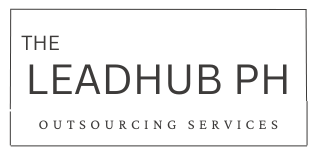Understanding Lead Generation: Strategies and Best Practices
In today's competitive business landscape, lead generation plays a crucial role in driving growth and ensuring a steady pipeline of potential customers. Whether you are a startup or a well-established company, effective lead generation strategies can significantly impact your bottom line. This article delves into the fundamentals of lead generation, explores key strategies, and highlights best practices to help your business thrive.
What is Lead Generation?
Lead generation is the process of attracting and converting prospects into individuals or organizations that have expressed interest in your products or services. These prospects, known as leads, can be generated through various marketing and sales tactics. The ultimate goal is to nurture these leads and guide them through the sales funnel until they become loyal customers.
Why is Lead Generation Important?
Effective lead generation offers several benefits, including:
1. Revenue Growth: By identifying and engaging with potential customers, businesses can increase sales and revenue.
2. Market Expansion: It helps you reach new audiences and explore untapped markets.
3. Cost Efficiency: Targeted lead generation ensures marketing resources are spent on high-potential prospects.
4. Improved Customer Insights: Gathering data on leads provides valuable
insights into customer preferences and behaviors.
Types of Leads
Not all leads are created equal. Understanding the different types can help businesses tailor their strategies:
1. Marketing Qualified Leads (MQLs): These are individuals who have shown interest in your offerings through actions like downloading an ebook or subscribing to a newsletter but may not yet be ready to make a purchase.
2. Sales Qualified Leads (SQLs): These leads have been vetted by the sales team and are deemed ready for direct sales engagement.
3. Product Qualified Leads (PQLs): These are prospects who have used your product, such as through a free trial, and are prime candidates for conversion.
4. Service Qualified Leads: Individuals who have explicitly expressed interest in your services, often through direct inquiries.
Key Lead Generation Strategies
1. Content Marketing: Create valuable content such as blog posts, whitepapers, infographics, and videos to attract and engage your target audience. Optimize content for SEO to improve visibility and attract organic traffic.
2. Email Marketing:
Use personalized and targeted email campaigns to nurture leads. Include clear calls-to-action (CTAs) and track open and click-through rates to gauge effectiveness.
3. Social Media Marketing:
Leverage platforms like LinkedIn, Facebook, Instagram, and Twitter to reach and engage potential leads. Run targeted ad campaigns to capture specific audience segments.
4. Search Engine Optimization (SEO):
Optimize your website and content for relevant keywords to improve search engine rankings. Ensure your site is user-friendly and mobile-optimized to enhance the user experience.
5. Pay-Per-Click (PPC) Advertising:
Use platforms like Google Ads to run targeted campaigns that drive traffic to landing pages. Implement A/B testing to refine ad copy and design for better performance.
6. Webinars and Events:
Host online or in-person events to showcase your expertise and connect with potential leads. Collect attendee information to follow up with tailored offers.
7. Referral Programs:
Encourage existing customers to refer new leads by offering incentives. Referrals often lead to higher conversion rates due to the trust factor.
8. Lead Magnets:
Offer free resources like ebooks, templates, or checklists in exchange for contact information. Ensure the lead magnet addresses a specific pain point or need of your target audience.
Tools for Lead Generation
Investing in the right tools can streamline and enhance your lead generation efforts.
Popular tools include:
| | Customer Relationship Management (CRM) Software: Tools like Salesforce, HubSpot, or Zoho CRM help manage and track leads effectively. Email Marketing Platforms: Solutions like Mailchimp, ActiveCampaign, or Constant Contact enable targeted email campaigns. Landing Page Builders: Tools like Unbounce or Leadpages simplify the creation of high-converting landing pages. Analytics Tools: Google Analytics and other platforms provide insights into website performance and user behavior. |
| | |
| | |
Best Practices for Lead Generation
1. Understand Your Target Audience:
Develop detailed buyer personas to understand your ideal customers' needs, preferences, and pain points.
2. Focus on Quality Over Quantity:
Prioritize generating high-quality leads that align with your business goals rather than amassing a large number of unqualified leads.
3. Leverage Data and Analytics:
Use data to refine your strategies, track performance metrics, and make informed decisions.
4. Test and Optimize:
Continuously test different approaches, such as A/B testing for landing pages or email campaigns, to identify what works best.
5. Maintain Consistency:
Consistently engage with your audience through regular updates, social media posts, and email communications.
6. Personalize Your Approach:
Tailor your messaging and offers to resonate with individual leads based on their preferences and behaviors.
7. Follow Up Promptly:
Respond to inquiries and follow up with leads in a timely manner to maintain interest and momentum.
Challenges in Lead Generation
Despite its importance, lead generation comes with challenges, including:
1. Generating High-Quality Leads: Finding leads that are genuinely interested and fit your target profile can be difficult.
2. Competition: Standing out in a crowded market requires creativity and a well defined value proposition.
3. Budget Constraints: Smaller businesses may struggle to allocate sufficient resources to lead generation.
4. Changing Customer Preferences: Staying updated with shifting trends and expectations requires constant effort.
Conclusion
Lead generation is a dynamic and essential component of business growth. By leveraging a mix of strategies, investing in the right tools, and adhering to best practices, businesses can attract high-quality leads and convert them into loyal customers. Remember, the key lies in understanding your audience, delivering value, and continually refining your approach. With dedication and the right tactics, successful lead generation is well within reach.

